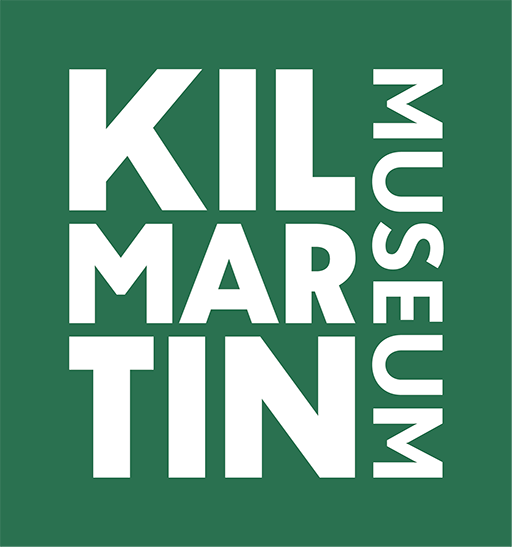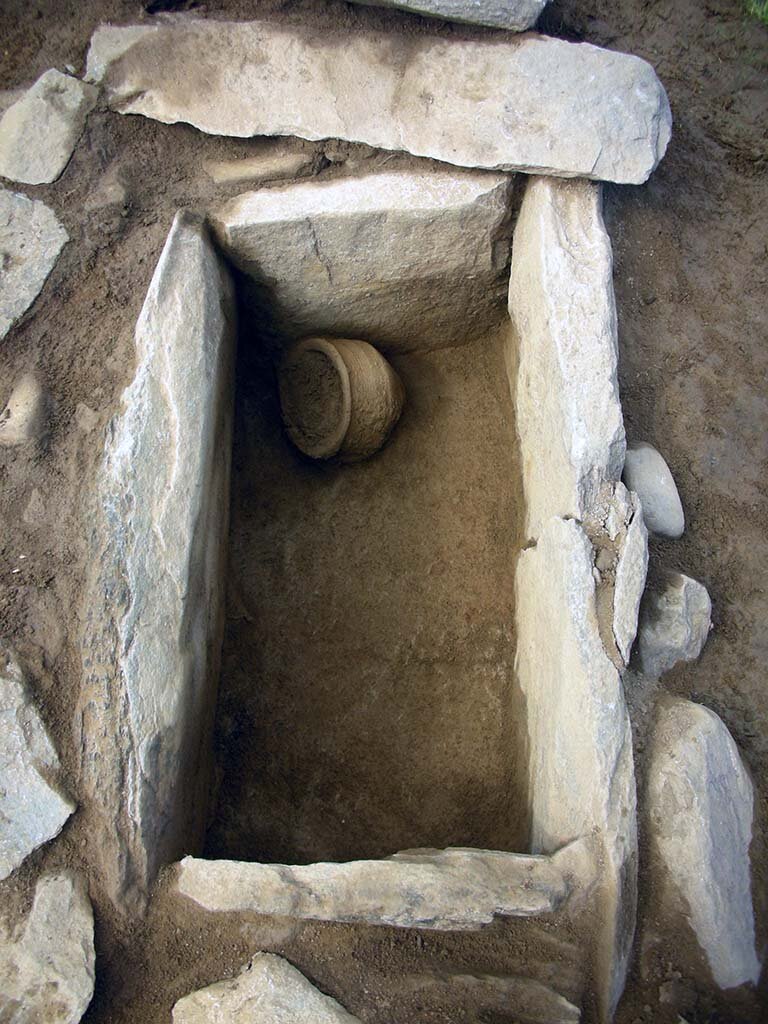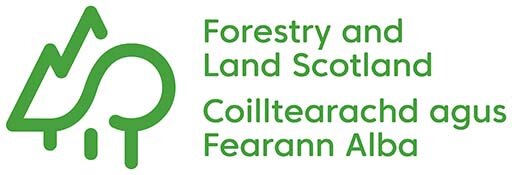Achnabreck Excavation
The rock art panel at Achnabreck (NR 85566 90814) was first discovered in January 2008 when storms blew over a group of substantial tree roots revealing the rock panel below. The site lies close to Scotland’s largest rock art panel of Achnabreck 1 and excavation of the site was undertaken by Kilmartin Museum in May 2008.
Balure Dun Excavation
The dun structure at Balure in North Knapdale only came to light during forest clearance in 2004 and its discovery has shown that there are important monuments still to be found in the Argyll landscape.
Barnluasgan Dun Excavation
Some of the most intriguing monuments that pepper Argyll are Forts and Duns. Many were likely constructed in the Iron Age, although some like Dunadd were occupied in later periods.
Bheinn Bheag Excavation
The archaeological walkover survey of Balnahard farm in November 2011 and February 2012 and formed part of the Scotland’s Islands-Island Archaeology Project, and enabled the local community on Colonsay to engage in a series of archaeological projects.
Carnassarie Cist Excavation
During the spring of 2013 Rosemary Neagle, the owner of Carnassarie farm, discovered what she thought was the capstone of a cist, which we proceeded to excavate. The cist was well built and cut into natural bedrock with commanding views south over Kilmartin Glen.
Carnassarie Cist II Excavation
Following the report of the possible discovery of a second cist on Carnassarie Farm by the owner, the site was examined to reveal what appeared to be an intact cist structure situated on a prominent natural knoll.
Carnassarie Mor Excavation
Documentary evidence tells us that the deserted township of Carnassarie Mor, which lies north of Kilmartin, dates back to at least the 15th century. Five structures were examined during the excavation.
Carnassarie Platform Excavation
Previous survey work had revealed what appeared to be some form of prehistoric enclosure, perhaps ‘ritual’ in nature, given the predominance of such sites Kilmartin Glen. To confirm this, we conducted a community excavation across the platform area in 2008.
Castle Dounie Excavation
In 2011 Kilmartin Museum was commissioned to partially excavate the entranceway of Castle Dounie Dun prior to the realignment of the access path to the monument and the work was funded by the Forestry Commission.
Craigglass Excavation
The archaeological investigation at the former settlement of Craigglass was a collaborative excavation initiated as part of the Dalraida Festival. The specific aim of excavation was to introduce the public and children in particular, to the practicalities of a ‘real’ excavation through active participation.
Dun Mhuirich 2012 Excavation
As part of this project, we undertook preliminary excavation and survey work at the Scheduled site of Dun Mhuirich in North Knapdale, Argyll. The site is likely a dun structure dating to the late Iron Age period (c. 2000 years old), but of particular interest were a set of buildings within the dun that were obviously of later, but unknown, date.
Dun Mhuirich 2013 Excavation
The site at Dun Mhuirich, just south of Tayvallich, sits on the summit of a steep sided rocky knoll next to an arm of Loch Sween. The fortifications consist today of two stone walled enclosures and outlying walls, the earliest of which were built in the Iron Age, around 2,000 years ago.
Dunollie Castle Excavation
The Dunollie castle project had several aims: to record the building fabric of the tower, examine surviving earthworks around the castle and re-excavate a previously excavated trench in the courtyard of the castle.
Dunollie House Excavation
The creation of a new parking area within the grounds of Dunollie House, Oban led to a watching brief over the affected area. Evidence of gravel quarrying was seen in the north of the area and this may be related to the construction of Dunollie House in 1746, or possibly the extensive remodelling of the house and grounds in 1830.
High Morlaggan 2010 Excavation
In 2009 Kilmartin Museum was invited to run an excavation for the Morlaggan Rural Settlement Group, which was set up by Fiona Jackson and Sue Furness to examine a deserted settlement close to Fiona’s home near Arrochar.
High Morlaggan 2011 Excavation
This community excavation involved hundreds of people in the excavation, which recovered thousands of artefacts relating to the history of the settlement. The artefacts we uncovered can be examined on the Morlaggan Rural Settlement Group website: http://highmorlaggan.co.uk/
Kilmory Oib Excavation
The settlement of Kilmory Oib is one of the many settlements abandoned in the 18th century due to changing agricultural regimes. In trying to get a better understanding of how and why this happened and the people it involved a programme of survey and excavation was undertaken at Kilmory Oib in 2008 as part of the Dalriada Project.
Largie Standing Stone Excavation
In the autumn of 2012 an outlying stone of the Nether Largie Standing Stone group collapsed. Excavation work was undertaken Kilmartin Museum, funded by the Craigend Trust, facilitated by the owner of the field, Mr Ian Malcolm, and the re-erection of the stone was completed by a team from Historic Scotland.
Ormaig Excavation
In the summer of 2007, a programme of archaeological work was carried out at Ormaig rock art site in Argyll. Through hand excavation the extent of the site was determined and previously noted but subsequently ‘lost’ decorated exposures were re-located and recorded.
Taynish Mill Excavation
In 2012 Kilmartin Museum was asked by Scottish Natural Heritage to undertake an excavation on Taynish Mill prior to consolidation work of the mill structure and its future presentation to the public.
Ballachuan Woodland Survey
In 2004 a team of archaeologists from Kilmartin Museum, together with volunteers from the Lorn Historical and Archaeological Society, conducted a walk over survey of Ballachuan Hazelwood and Sian Wood on behalf of and funded by, the Scottish Wildlife Trust.
Balnahard, Colonsay Survey
The archaeological walkover survey of Balnahard farm on the north end of Colansay was undertaken by Kilmartin Museum in November 2011 and February 2012 and formed part of the Scotland’s Islands-Island Archaeology Project.
Barr Mor, Taynish Survey
The survey work undertaken on the western side of Barr Mor on the Taynish peninsula has confirmed and recorded the remains of a dispersed settlement, which may have been abandoned prior to the 18th century. This is suggested by the documentary evidence or rather lack of a reference to the settlement after the late 17th century.
Brenechoillie And Eredine Forests Survey
Between 2004 and 2007 Kilmartin Museum were commissioned by Forestry Commission Scotland to augment and update their existing GIS data base which maintains information about sites on their forest estates in Mid Argyll.e
Carnassarie Survey
In 2008 a walkover survey was conducted at Carnassarie. This work was then followed up by an excavation at a previously unrecorded platform at Carnassarie, the report for which can be found below.
Dun Fhinn Survey
The survey of Dun Fhinn and its associated landscape on the south east of Islay has revealed a picture of an area extensively settled and utilised in the past dating from at least the Iron Age and very likely before.
Inveryne Farm Survey
Inveryne Farm has a diverse range of archaeological remains within its boundaries. Evidence of settlement situated around Auchalick Bay and the coast and terraces along and above the Auchalick River indicates that the landscape was a relatively fertile one.
Kilbride Survey I
In 2008 and 2009, as part of the Dalriada Project, we undertook two walkover surveys of Kilbride Farm, which is situated between the villages of Kilmartin and Kilmichael Glassary.
Kilbride Survey II
In 2008 and 2009, as part of the Dalriada Project, we undertook two walkover surveys of Kilbride Farm, which is situated between the villages of Kilmartin and Kilmichael Glassary.
Kilmartin Graveyard Survey
In January 2009 Kilmartin Museum conducted a Desk Based Survey (DBA) on the church and graveyard of Kilmartin. The aim of the report was to locate and compile all known information on the church with particular reference to the ‘old’ graveyard.
Kilmichael Graveyard Survey
In January 2009 Kilmartin Museum conducted a Desk Based Survey (DBA) on the church and graveyard of Kilmichael Glassary. The aim of the report was to locate and compile all known information on the church and graveyard
Kilmichael, Kilmory And Minard Forest Survey
The large area of covered by Kilmichael, Kilmory and Minard Forests was surveyed in 2007. The survey primarily involved the recording of 32 deserted settlements and associated features such as enclosures, kilns and tracks.
Kilmory And Arichonan Settlements Survey
The settlements of Kilmory Oib and Arichonan are just two of the many deserted settlements that can found in Argyll, as in the rest the Highlands.
North Knapdale Forest Survey
In 2004 a survey of North Knapdale Forest was undertaken. In total 55 sites were visited and recorded, with most sites allowing interpretation and categorisation.
Ormaig Forest Desk-Based Survey
This report was prepared by Kilmartin Museum following a request from the Forestry Commission to prepare a desk-based survey on Forestry Commission land in Ormaig Forest, Kilmartin Parish, Argyll.
Ormaig Forest Survey
The survey of Ormaig Forest in 2004 involved the recording of 37 sites. Several sites were identified as being potentially prehistoric in origin, justifying one of the main aims of the survey.
Shian Woodland Survey
In 2004 a team of archaeologists from Kilmartin Museum, together with volunteers from the Lorn Historical and Archaeological Society, conducted a walk over survey of Ballachuan Hazelwood and Sian Wood on behalf of, and funded by, the Scottish Wildlife Trust.
Tarbert Castle Survey
In 2012 Kilmartin Museum was commissioned by the Explore Tarbert Castle Project to conduct an archaeological and historical study at the scheduled site of Tarbert Castle, Kintyre, Argyll.
Dalriada Project Evaluation
In 2006 we surveyed and evaluated several sites in order to look at their potential for future excavation as part of the Dalriada Project. Eleven sites were examined.
Dun Fhinn Excavation
Following a survey of Dun Fhinn in 2017 a small excavation was conducted at the site in April 2018 by a team from Kilmartin Museum and Reading University, this part of the Kintour Landscape Project. The Dun structure likely dates to the Iron Age although it is unusual as it also contains a roundhouse structure. The report combines the results of the survey and the excavation work.
Carnassarie Castle 2017 Excavations
In 2017 Kilmartin Museum undertook excavations at Carnassarie Castle, which is situated on a hill overlooking the head of Kilmartin Glen.























































